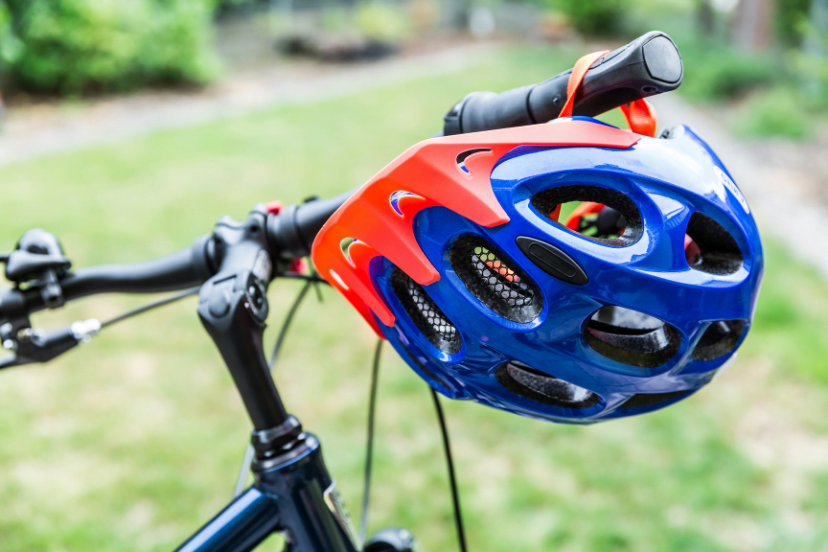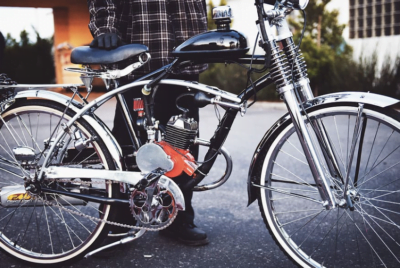The Comprehensive Guide to a Mountain Bike Helmet
Mountain biking is an electrifying sport, packed with adventure and a hearty dose of exercise. As with any activity, safety should be at the forefront of your preparations. The mountain bike helmet, a quintessential piece of safety gear, deserves significant attention in this regard. This guide delves into the world of mountain bike helmets, examining their vital role, various types, essential features, and practical tips on choosing the right size, proper wearing, and maintenance. We will also discuss when it’s time to replace your helmet.
- The Importance of a Mountain Bike Helmet
- Different Types of Helmets: Cross-Country, Trail, and Enduro
- Key Features: Protection, Comfort, and Additional Features
- Finding the Right Size
- Correctly Wearing a Helmet
- Maintenance and Care
- When to Replace Your Helmet
I. The Importance of a Mountain Bike Helmet
Mountain biking often propels you through rugged terrains and challenging trails. The unpredictability of these paths increases the risk of accidents, making a mountain bike helmet a critical safety item. The helmet is designed to shield your head from injuries during a fall or collision, as it absorbs the brunt of the impact, mitigating the severity of potential injuries. A well-known fact in the cycling community is the significant reduction of head injuries when a helmet is worn, a testament to their importance in safety protocols.
Apart from protective capabilities, mountain bike helmets offer other benefits. They feature visors for shielding your eyes from the sun and debris. Some advanced models even incorporate features like a camera mount, light mount, or chin bar for enhanced protection and convenience. The chin bar, in particular, is a welcome feature for aggressive riding styles, offering additional safety and confidence on the trail.
II. Types of Mountain Bike Helmets
Mountain bike helmets are not a one-size-fits-all solution. They come in different variants, each designed for specific riding styles and conditions. Understanding these types is a crucial step in selecting a helmet that aligns with your biking needs.
A. Cross-Country Helmets
Cross-country mountain biking involves lengthy rides across diverse terrains. Helmets designed for this discipline are lightweight and feature ample ventilation, keeping riders comfortable during these extended journeys. They have a sleek design to minimize wind resistance and usually lack a visor. The primary focus of cross-country helmets is to achieve a harmonious balance between weight, ventilation, and safety.
B. Trail Helmets
Trail helmets are versatile options suitable for a range of mountain biking styles. They provide more coverage and protection than cross-country helmets, particularly at the back of the head. Equipped with a visor, they protect riders from the sun and debris and offer substantial ventilation for comfort. If you’re just starting your riding journey, a trail helmet could be an excellent investment, offering a blend of protection, comfort, and practicality.
C. Enduro Helmets
Enduro riding involves downhill sections where the risk of accidents is amplified. Accordingly, enduro helmets deliver more protection than other types of helmets. They share design similarities with trail helmets but offer expanded coverage at the back and sides of the head. Enduro helmets also feature a visor and adequate ventilation to ensure comfort while prioritizing safety.
III. Features to Look for in a Mountain Bike Helmet
When choosing a mountain bike helmet, several features should be considered to ensure it meets your specific needs and enhances your cycling experience.
A. Protection
A helmet’s primary function is to safeguard your head. It’s crucial to choose a helmet that meets safety standards, with certifications from reputable organizations. Most helmets utilize Expanded Polystyrene (EPS) foam to absorb impact.
Some helmets incorporate additional safety features like Multi-directional Impact Protection System (MIPS) or similar technologies, which help reduce rotational forces during angled impacts. These technologies can offer additional protection in certain accident scenarios.
In addition to a quality helmet, other cycling gear plays a crucial role in ensuring a comfortable and safe ride. For instance, a cycling vest is a versatile piece of gear that can significantly enhance your cycling experience. It acts as a shield against the wind and rain, while its lightweight design doesn’t add any unnecessary weight during your rides. Moreover, cycling vests often come with reflective elements that increase visibility, ensuring a safer ride in low-light conditions.
B. Comfort
Comfort is a fundamental consideration for any helmet. It includes aspects like fit, ventilation, and weight. A well-fitting helmet stays snug on your head without causing discomfort or pressure points. Ventilation plays a pivotal role in maintaining comfort, especially during long rides or in warm weather. Helmets with an abundance of vents keep your head cooler by allowing heat to escape and fresh air to flow in. Lastly, the helmet’s weight can affect your comfort and fatigue levels on long rides. Lighter helmets are generally more comfortable to wear over extended periods.
Cycling socks and caps are more than just fashion statements. They provide function as well as style. Socks designed specifically for cycling offer superior moisture-wicking capabilities to keep your feet dry and comfortable. They also support your arches, which is vital on long rides. Cycling caps, on the other hand, are a staple for any rider. They serve a variety of purposes from keeping sweat out of your eyes to providing an extra layer of warmth on cooler rides. Whether it’s a short trip or a long adventure, donning a cycling hat under your helmet can enhance your comfort and overall riding experience.
C. Additional Features
Mountain bike helmets often include additional features that enhance their functionality and convenience. A visor shields your eyes from the sun and debris, while a camera mount allows you to attach an action camera to record your adventures. A light mount lets you affix a light for night rides, and a detachable chin bar provides added protection for aggressive riding styles.
IV. How to Choose the Right Size
Choosing the right size helmet is paramount for both comfort and protection. Here’s a step-by-step guide to help you find the perfect fit.
A. Measure Your Head
The first step is to measure your head’s circumference. Use a flexible tape measure, wrap it around your head about an inch above your eyebrows. This measurement is your head size, which serves as a starting point for selecting the correct helmet size.
B. Refer to the Size Chart
Helmet manufacturers typically provide a size chart, showing which helmet sizes correspond to different head measurements. Using your head size, refer to this chart and select the appropriate helmet size. Remember, different brands may have slightly different sizing, so always refer to the manufacturer’s specific size chart.
C. Try It On
If possible, try the helmet on before purchasing. The helmet should fit snugly on your head without being uncomfortably tight. It shouldn’t move around when you shake your head. If you’re buying online and can’t try it on, make sure the retailer has a good return policy so you can exchange it if the fit isn’t right.
V. How to Properly Wear a Mountain Bike Helmet
Even the best helmet won’t protect you effectively if it’s not worn correctly. Here’s how to ensure your helmet fits and sits properly on your head.
A. Positioning
Your helmet should sit level on your head, covering your forehead without tilting backward or forward. The front edge should be about an inch above your eyebrows to provide adequate protection while not obstructing your vision.
B. Adjusting the Straps
The helmet’s straps should form a “V” shape under each ear. Buckle the chin strap, ensuring it’s snug but comfortable. You should be able to fit about two fingers between your chin and the strap.
C. Checking the Fit
Once the helmet is positioned and the straps adjusted, do a fit check. Open your mouth wide as if you’re yawning. The helmet should pull down slightly on your head. If it doesn’t, tighten the chin strap. You can also try shaking your head – the helmet should stay in place and not slide around on your head.
VI. Maintaining Your Mountain Bike Helmet
Proper maintenance can prolong your helmet’s lifespan and ensure it continues to provide effective protection. Here are some tips on how to care for your helmet.
A. Cleaning
Clean your helmet regularly to remove sweat, dirt, and bacteria. Use a soft cloth, mild soap, and warm water for cleaning. Avoid using harsh chemicals or abrasive materials that could compromise the helmet’s materials or damage its protective properties.
B. Storage
Store your helmet in a cool, dry place away from direct sunlight. UV rays can degrade the helmet materials over time, reducing their effectiveness. Avoid storing heavy objects on top of the helmet, as this can cause deformation.
C. Inspecting for Damage
Regularly inspect your helmet for signs of damage, such as cracks, dents, or fraying straps. Any damage can reduce the helmet’s protective capabilities. If you notice any signs of damage, it’s time to replace your helmet.
VII. When to Replace Your Mountain Bike Helmet
Knowing when to replace your helmet is vital for your safety. Here are some guidelines to help you determine when it’s time for a new helmet.
A. After an Impact
If you’ve had a crash or impact while wearing your helmet, it’s time to replace it, even if no visible damage is evident. The protective foam inside the helmet is designed to absorb impact by deforming, and it doesn’t bounce back. Once it’s been compressed, it won’t provide the same level of protection.
B. Visible Damage
If you notice visible damage on your helmet, such as cracks, dents, or frayed straps, it’s time to replace it. These signs indicate that the helmet’s structural integrity may be compromised, reducing its protective capabilities.
C. Age
Even if your helmet hasn’t been involved in an accident and shows no signs of damage, manufacturers recommend replacing it every three to five years. Over time, the materials in the helmet can degrade and lose their protective properties, especially if the helmet is frequently exposed to sunlight and sweat.
In conclusion, the mountain bike helmet is an indispensable piece of safety equipment for every cyclist. By understanding the different types, key features, and how to choose, wear, and care for your helmet, you can enjoy your mountain biking adventures with confidence and peace of mind.
FAQs
A. What is MIPS in a helmet?
MIPS stands for Multi-directional Impact Protection System. It’s a technology designed to reduce rotational forces that the brain could experience in the event of an angled impact. A MIPS-equipped helmet has a low-friction layer inside the helmet that allows a small amount of rotation during an impact, thereby reducing the potential for brain injury.
B. How should a mountain bike helmet fit?
A mountain bike helmet should fit snugly on your head without causing discomfort or pressure points. The front edge should be about an inch above your eyebrows, and the helmet should cover the top of your head completely. The straps should form a “V” shape under each ear, and the chin strap should be snug but not tight.
C. How often should I replace my mountain bike helmet?
As a general rule, you should replace your mountain bike helmet every three to five years, even if it has not been involved in a crash. The materials in the helmet can degrade over time, reducing their protective properties. Additionally, if your helmet has been involved in an impact or shows signs of damage, it should be replaced immediately.
D. Can I just use a road bike helmet for mountain biking?
While road bike helmets can be used for mountain biking, they may not provide the same level of protection or features designed for off-road use. Mountain bike helmets typically offer more coverage, especially at the back of the head, and come with features like a visor to shield your eyes from the sun and debris.
E. How can I clean my mountain bike helmet?
To clean your mountain bike helmet, use a soft cloth, mild soap, and warm water. Avoid using harsh chemicals or abrasive materials, as these can damage the helmet’s materials. Remove the padding and wash it separately, if possible. Allow the helmet to air dry completely before using it again.



